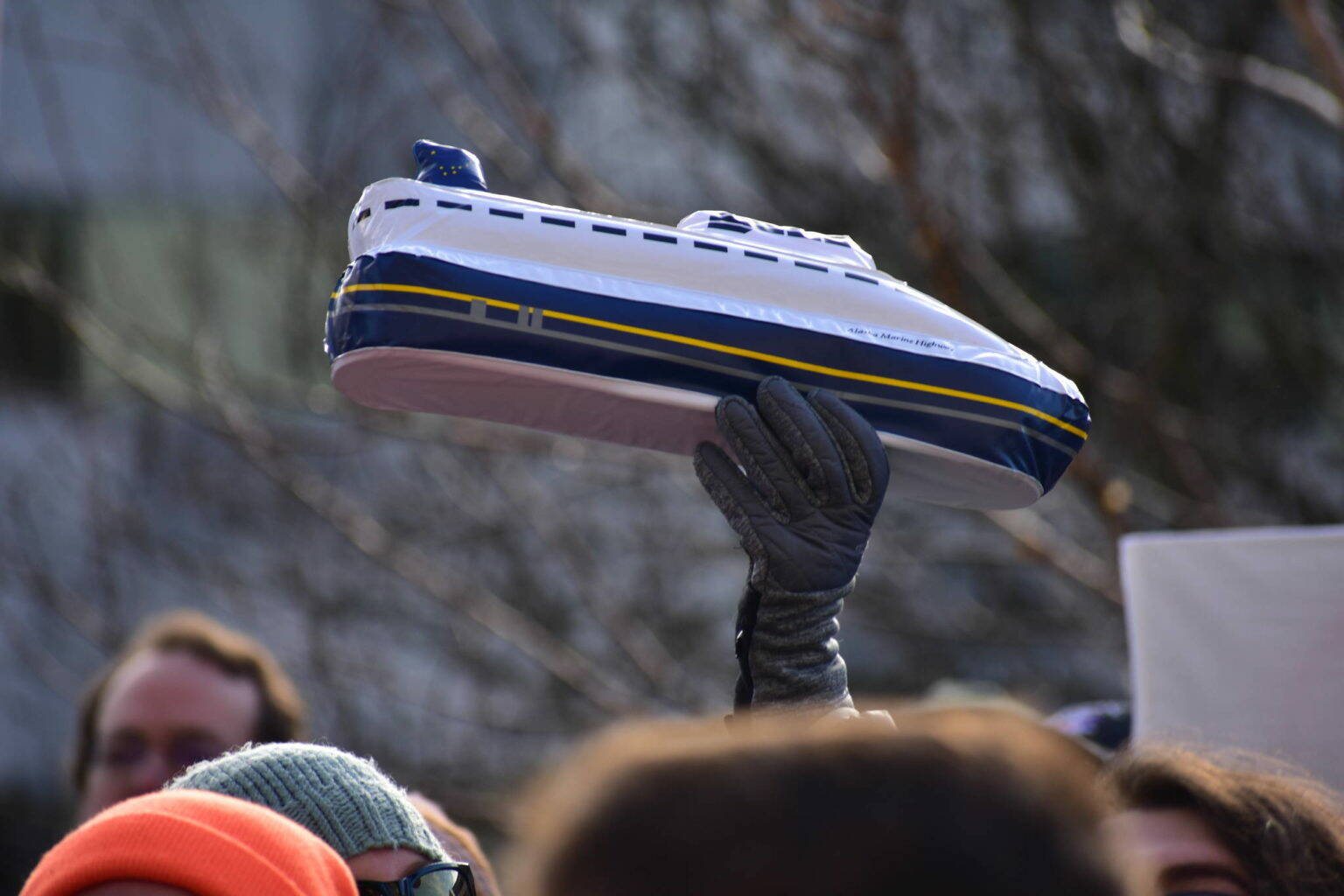To say that I love our Alaska Marine Highway System would be an understatement. I have ridden the ferries for more than 50 years. I even remember — with great fondness — the elegant and stately MV Wickersham. One of my love letters to the ferries was published by Epicenter Press in an essay collection titled “Our Alaska,” edited by Mike Doogan. Nothing demonstrates better how state-run public transportation can improve the lives of residents. It has long been a source of pride to me and other Alaskans.
And yet, the Dunleavy administration slashed the budget for the marine highway in his first year as governor, crippling the system, leading to less service, fewer vessels and higher prices. Complete recovery isn’t even on the horizon. And the higher prices? Enter dynamic pricing.
As a regular ferry rider, I have sadly become aware of the use of dynamic pricing on fares. Dynamic you may ask, what does that mean? In normal usage, dynamic can mean exciting, engaging or interesting. Dynamic pricing is none of these things. Dynamic in this context is truly Orwellian. Dynamic pricing means that prices increase based on certain variables. For example: the fare for a car is dependent on how many spaces are left. The fewer the spaces, the higher the price. The price changes. That is what dynamic means. In other words, when there is less availability of space for people, cars, and cabins, the price becomes higher.
[Chilly reception for proposed winter ferry schedule]
If you find this as hard to believe as I did, here is how it is explained under fares on the AMHS website:
“Dynamic pricing was implemented whereas with the decrease of availability, published fares will increase. In addition, event pricing for some special events will include a 10% fare increase four days before and after the event in that port. Finally, there was an adjustment to change fees increasing the fees as the travel date approaches: $20 up to two weeks before departure, $50 two weeks to three days before departure and $100 within three days of departure. Passengers are encouraged to book early for the best fares.”
The chart on the website lays out exactly how the prices increase based on availability. For example, if 30% of the passenger capacity is booked, the fare increases by 5%. If 90% of the passenger capacity is booked, the fare increases by 30%. Sizeable. We regularly put our car on the ferry in the summer. Sometimes we cannot book early. If 80% of the spaces are already taken, then we have to pay an additional 50% added on to the base price. Does that seem fair? Not to me. I believe that this kind of pricing exploits the ferry users.
So dynamic pricing means that prices rise dependent on availability and not only that, but there are sizeable change fees. And what do you think about the fact that the administration even decided to raise the prices before and after special events that people want to travel to—like the Haines Fair or Little Norway in Petersburg or Celebration in Juneau. Ouch! That takes a certain amount of cold-bloodedness to treat one’s fellows Alaskans that way. I wonder if fewer people decide to attend these events because of the cost of travel, thus decreasing the boost to the local economies. Just a thought.
I believe that dynamic pricing is predatory. It is totally inappropriate for a state-run public highway like the Alaska Marine Highway. Unlike airlines, the Alaska Marine Highway system is not a private corporate entity operated for profit. The Alaska Marine Highway is a government entity, just as the highways in the rest of Alaska are government entities. All receive Federal funding. Dynamic pricing takes advantage of people who often have no other choice but to use the ferries.
I still love our ferries, and the crews, but find the use of dynamic pricing reprehensible in a state-run public service. Fares should be predictable and stable and affordable for all travelers because this is our highway. Alaskans should be proud of our system. I want to be proud of the Alaska Marine Ferry System again.
• Bridget Smith is a longtime user of the Alaska Marine Highway System. Smith resides in Juneau. Columns, My Turns and Letters to the Editor represent the view of the author, not the view of the Juneau Empire. Have something to say? Here’s how to submit a My Turn or letter.

